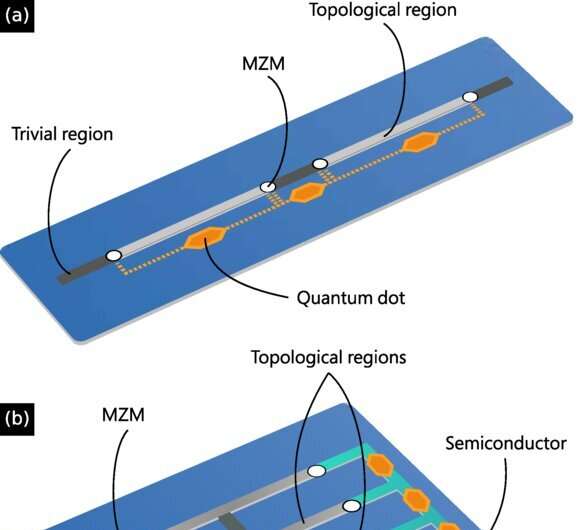First Milestone Achieved by Microsoft in Developing a Reliable and Practical Quantum Computer

June 24, 2023 report
This article has undergone a review based on Science X's editorial process and policies. The editors have ensured the content's credibility by fact-checking, peer-reviewing the publication, relying on trusted sources, and proofreading it.
The renowned team of researchers at Microsoft Quantum has reached a major milestone towards developing a reliable and practical quantum computer, as reported in their publication in the Physical Review B journal. They aim to build a scalable and dependable quantum computer within the next 25 years.
Efforts to construct a useful quantum computer have faced various hurdles, with error rates posing a significant challenge. However, Microsoft suggests that the progression of quantum computer development is following a similar path to that of traditional computers.
According to their study, new techniques and concepts were pursued, followed by hardware upgrades that resulted in the modern computers of today. However, the team believes that the current methods used for logical qubits, such as a spin transmon or a gatemon, are not scalable, and a new approach that allows for scaling is imperative.
They have now developed a way to represent a logical qubit using hardware stability, with the device inducing a phase of matter characterized by Majorana zero modes - types of fermions. They claim this device has low enough disorder to pass the topological gap protocol, proving its viability. This breakthrough is considered the initial step towards creating not just a quantum computer but a quantum supercomputer.
Furthermore, Microsoft has developed a new performance measure for quantum supercomputers – reliable quantum operations per second (rQOPS). A quantum supercomputer must achieve an rQOPS of at least one million and can reach a billion rQOPS, making it truly useful.
For more information: Morteza Aghaee et al, InAs-Al hybrid devices passing the topological gap protocol, Physical Review B (2023). DOI: 10.1103/PhysRevB.107.245423
Microsoft blog post: cloudblogs.microsoft.com/quant … antum-supercomputer/
Journal information: Physical Review B
© 2023 Science X Network




